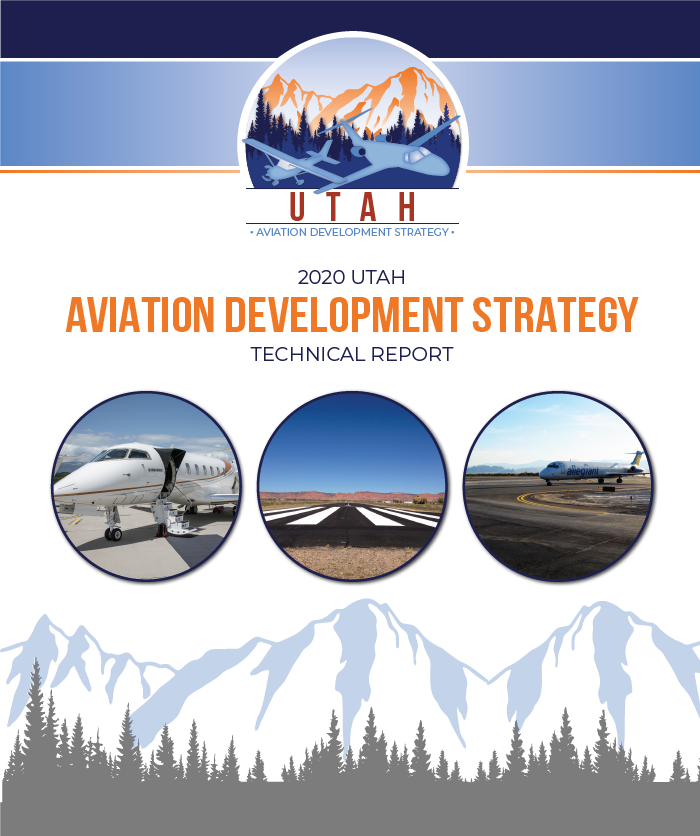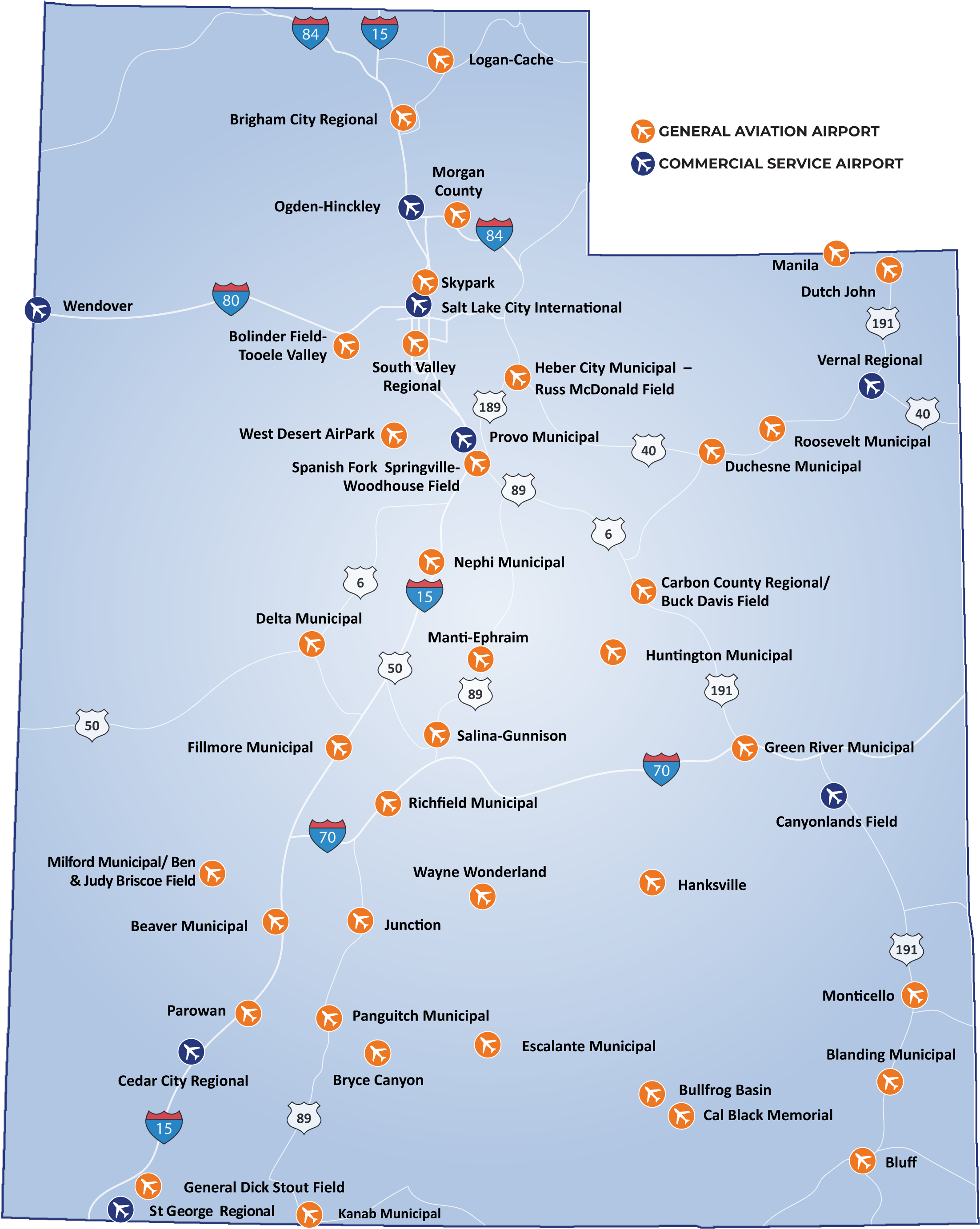Utah Continuous Aviation System Plan and Economic Impact Study

Prior to 2020, the most recent comprehensive analysis of Utah’s 46-airport system was completed in 2007. The central component of the 2020 planning effort was a system plan and economic impact study. The study included visits to more than 35 Utah airports. These visits enabled the team to collect data, assess the airport’s economic synergy with neighboring communities, and collect information on unique economic benefits and airport stories. The project team worked with a diverse advisory committee throughout the process.
The data collection effort was facilitated by a cloud-based survey effort that supported real-time updates of information as the study progressed. This analysis included evaluating FAA National Off-Load Program data to demonstrate businesses and economic linkages associated with each airport. Special attention was given to airports serving medical operators and Utah-based and visiting businesses. A detailed market assessment and strengths, weaknesses, opportunities, and threats analysis was prepared for key system airports as part of the economic analysis.
The study collected data on each airport’s benefits, including those provided by airport business tenants, management, and all air travelers. A variety of survey efforts was used to collect statistically accurate information. A detailed assessment of the economic impact of Salt Lake City International Airport was prepared as part of the statewide effort, which included an extensive WiFi-linked passenger survey to establish visitor expenditures. Similarly successful WiFi surveys were also conducted at Utah’s other commercial service airports. The Impact Analysis for Planning (IMPLAN) model was used to determine multiplier impacts for each system airport, showing the incredible economic impact the airport system provides to Utah’s economy. In addition to jobs and contributions to the economy from payroll and spending, specific examples of how each airport benefits its community were collected and presented as part of the report.
Unique components of this study included the development of an economic calculator to update the estimated economic impacts. The calculator enables the state to examine what-if scenarios, including impacts that could be realized from implementing a large capital improvement project, attracting a new business tenant, or securing a new airline service. The economic impact calculator estimates tax revenues. Legislative reports highlighting airport benefits were prepared for more than 100 House and Senate districts.


Client
Utah Department of Transportation Division of Aeronautics
Location
Utah